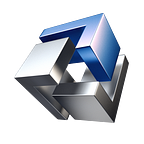Polygon Blockchain 2024: Advanced Insights and Applications — The Blockchain Academy
In the ever-evolving landscape of blockchain technology, the Polygon blockchain has emerged as a luminary, particularly noted for its scalability and interoperability within the Ethereum ecosystem. As we step into 2024, it’s crucial to examine how Polygon, evolving from its original avatar as Matic Network, has carved out a distinct niche in this competitive domain. This article aims to explore the advanced features, functions, and the unique trajectory of the Polygon blockchain, shedding light on its role and significance in the current blockchain ecosystem.
Polygon’s Architecture and Scalability Solutions
Polygon’s architecture is a marvel of blockchain engineering, designed to address some of the most pressing challenges faced by blockchain networks, particularly scalability. At its core, Polygon operates as a Layer 2 scaling solution, functioning atop the Ethereum blockchain, thereby inheriting its security and robustness while significantly enhancing transaction throughput.
One of the key elements of Polygon’s architecture is its ability to process transactions off the main Ethereum chain, using sidechains for managing and executing transactions. This system not only alleviates congestion on the Ethereum network but also dramatically reduces transaction fees and processing times. Furthermore, Polygon’s scalability solutions have been pivotal in enabling a broader adoption of Ethereum, making it more accessible and efficient for both developers and users.
Polygon’s interoperability features are equally impressive. By facilitating seamless interaction among various blockchain networks, Polygon has positioned itself as a crucial bridging framework in the multi-chain future of blockchain technology. This interoperability is not just a technical accomplishment but also a strategic asset in an increasingly interconnected blockchain world.
Innovations in Polygon from 2020 to 2024
Since its inception as Matic Network and its rebranding to Polygon, the platform has undergone significant technological evolution. The period from 2020 to 2024 has been marked by rapid advancements in Polygon’s infrastructure. Notable among these is the development of Polygon SDK, a flexible framework that allows the creation of a variety of applications including standalone chains and secured chains.
Another major innovation in Polygon has been the introduction of Plasma Chains, a scaling solution that uses fraud proofs to ensure the security of off-chain transactions. This technology has further enhanced Polygon’s capability to process high transaction volumes, making it an attractive platform for enterprise-level applications.
Polygon has also made strides in optimizing its consensus mechanisms, moving towards more energy-efficient and less resource-intensive models. This evolution not only addresses environmental concerns but also contributes to the network’s scalability and performance.
Polygon in Action: Real-World Applications and Case Studies
Polygon’s practical applications are diverse and far-reaching. In the realm of Decentralized Finance (DeFi), Polygon has enabled high-speed, low-cost transactions, making it a preferred platform for many DeFi projects. Its efficiency has fostered a favorable environment for yield farming and staking, attracting both developers and investors to the ecosystem.
In the NFT space, Polygon has made significant contributions by enabling the creation and trade of NFTs at reduced costs and higher speeds. This has been particularly beneficial for artists and creators who require a platform that can support high-volume transactions without prohibitive fees.
The gaming industry has also reaped the benefits of Polygon’s scalability and interoperability. By facilitating smooth and efficient in-game transactions and cross-chain asset transfers, Polygon has become a go-to platform for blockchain-based games.
Enterprise applications of Polygon are equally noteworthy. Several businesses have leveraged Polygon’s technology for supply chain management, data verification, and identity management solutions, demonstrating its versatility and robustness in handling a variety of real-world applications.
The Future Trajectory of Polygon
Looking towards the future, Polygon is poised to maintain its trajectory as a leading platform in the blockchain space. The ongoing developments suggest a focus on enhancing the network’s scalability and interoperability features, further solidifying its position as a versatile and efficient Layer 2 solution.
However, the road ahead is not without challenges. As the blockchain ecosystem becomes more crowded and competitive, Polygon will need to continually innovate to stay ahead of the curve. The platform will also need to navigate the evolving regulatory landscape, ensuring compliance while maintaining its decentralized ethos.
In terms of potential advancements, we can expect Polygon to delve deeper into areas like cross-chain compatibility, privacy solutions, and enterprise blockchain applications. These areas represent not just technological frontiers but also opportunities for Polygon to expand its impact and utility in the blockchain world.
The journey of Polygon from its days as Matic Network to its current stature in 2024 is a testament to the dynamism and innovation inherent in the blockchain sector. With its advanced features, focus on scalability and interoperability, and diverse range of applications, Polygon stands out as a formidable platform in the blockchain space. As it continues to evolve and adapt to the changing landscape, Polygon is well-positioned to play a pivotal role in shaping the future of blockchain technology.
Originally published at https://theblockchainacademy.com on February 7, 2024.
